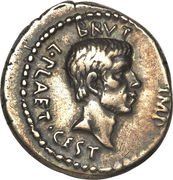Rare Roman Coins: A Glimpse into Ancient Wealth and Power
Discover the top rare Roman coins and treasures of history. Explore the rarity, value, and historical significance of Roman coins prized by collectors worldwide.
Why choose Roman Coins?
Roman coins are not just remnants of a long-gone civilization—they are historical artifacts that capture the wealth, culture, and power of one of history’s greatest empires. Among these coins, rare Roman coins stand out for their scarcity, exquisite craftsmanship, and unique historical significance. Collectors, historians, and archaeologists prize them for their stories about Roman society and its rulers.
How rare are Roman coins?
This article delves into the world of rare Roman coins, exploring their history, notable examples, factors contributing to their rarity, and their lasting appeal in modern numismatics.
- What Makes a Roman Coin Rare?
The rarity of a Roman coin depends on several factors that influence its production, survival, and discovery.
1.1 Limited Minting
Some Roman coins were produced in limited quantities due to specific historical circumstances, such as emergency issues during wars or special commemorations.
1.2 Unique Designs or Errors
Coins with unusual designs, minting errors, or experimental features are often rare. These anomalies make them particularly intriguing to collectors.
1.3 Material and Condition
Coins made of precious metals like gold are rarer than bronze or silver coins due to their intrinsic value, which often leads to melting and recycling. Similarly, coins in excellent condition are rare because they were typically circulated for extended periods.
1.4 Historical Context
Coins linked to short-lived emperors, major events, or unique political transitions are rarer because of the limited time frame in which they were issued.
The EID MAR Denarius
- Examples of Rare Roman Coins
Over the centuries, many rare Roman coins have been discovered, each with its own story. Here are some of the most notable examples:
2.1 The EID MAR Denarius
One of the most famous Roman coins, the EID MAR denarius, was minted by Brutus in 42 BCE to commemorate the assassination of Julius Caesar. The coin features a portrait of Brutus on one side and a pair of daggers with the words “EID MAR” (Ides of March) on the other, symbolizing Caesar’s murder. Only a few examples of this coin exist, making it one of the rarest and most sought-after coins in Roman history.

2.2 The Gold Aureus of Octavian
Struck around 28 BCE, this gold coin commemorates Octavian’s (later Augustus) victory at the Battle of Actium. It features a depiction of Octavian as a military leader and symbolizes the transition from Republic to Empire. Its rarity stems from its limited production and historical importance.

2.3 The Silver Denarius of Otho
Otho ruled for only three months in 69 CE, the “Year of the Four Emperors.” Coins bearing his likeness are extremely rare due to his short reign. The Otho denarius is particularly prized for its rarity and historical significance.
2.4 The Solidus of Constantine I
While solidi were relatively common in the late Roman Empire, certain issues of Constantine I’s solidus are rare. Coins featuring specific mint marks or commemorative designs, such as his victory at the Battle of the Milvian Bridge, hold significant value.
2.5 The Gold Medallion of Maxentius
Issued in the early 4th century CE, this large gold medallion is a rare example of Roman ceremonial coinage. These medallions were not intended for circulation but were gifts to high-ranking officials. Their rarity and artistry make them highly desirable.
- The Historical Significance of Rare Roman Coins
Rare Roman coins are more than monetary artifacts; they serve as historical documents that reveal details about Roman politics, economy, and culture.
3.1 Political Propaganda
Many rare coins were minted to promote political messages or celebrate victories. For example, the EID MAR denarius is not just a coin but a bold political statement.
3.2 Insights into Leadership
Coins featuring short-lived emperors like Otho or Galba provide valuable insights into periods of instability, such as the Year of the Four Emperors.
3.3 Economic Indicators
The materials and designs of rare coins reflect the economic conditions of their time. For instance, the debasement of silver coins in the 3rd century CE signals the Empire’s financial struggles.
- Modern Collecting and Value of Rare Roman Coins
Rare Roman coins are highly sought after in the modern world, commanding impressive prices at auctions and among collectors.
4.1 The Appeal of Rarity
Collectors value Roman coins for their historical significance, artistic beauty, and the thrill of owning a piece of antiquity. Rare coins, in particular, offer a unique sense of connection to the past.
4.2 Record-Breaking Sales
In 2020, an EID MAR denarius sold for $4.2 million at auction, highlighting the immense value of rare Roman coins.
The gold aureus of Octavian and rare solidi of Constantine I have also fetched millions due to their scarcity and historical importance.
4.3 Grading and Authentication
The value of a rare Roman coin depends on its condition, authenticity, and provenance. Organizations like the American Numismatic Association and professional coin graders help ensure coins are genuine and accurately graded.
The preservation of rare Roman coins
- Preservation and Ethical Considerations
5.1 Conservation Efforts
The preservation of rare Roman coins is essential for maintaining their historical value. Proper storage, cleaning, and documentation are crucial to prevent deterioration.
5.2 Ethical Collecting
Collectors and institutions must ensure that coins are acquired ethically. This includes avoiding coins obtained through illegal excavations or those lacking proper documentation.
Conclusion
Rare Roman coins are timeless treasures that bridge the gap between the ancient and modern worlds. Each coin tells a story of emperors, battles, and cultural shifts, offering a tangible link to the grandeur and complexity of the Roman Empire. Whether cherished by collectors or studied by historians, these coins continue to captivate and inspire, proving that even the smallest artifacts can hold immense historical value.
Leave a Reply